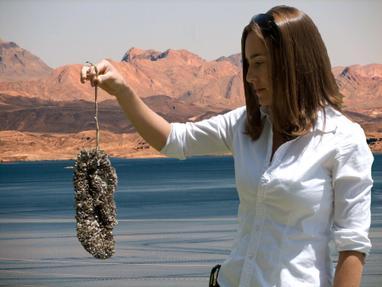 “Early detection and response, partnerships across jurisdictions seen as critical measures
“Early detection and response, partnerships across jurisdictions seen as critical measures
“The spread of invasive species has been identified as the second-leading cause of extinctions among all plants and animals worldwide — and the problem is getting worse in the era of global trade. Just a few months ago, scientists warned that North American amphibians are at risk from an invasive fungus. White-nose syndrome, which has wiped out millions of bats, may have also spread to the U.S. from Europe.
“Federal officials now say they have a plan to try and curb the proliferation of invasive species by focusing on early detection and swift response. The measures are outlined in a report released by the Interior Department: Safeguarding America’s Lands and Waters from Invasive Species: A National Framework for Early Detection and Rapid Response.
“Invasive species pose one of the most significant ecological threats to America’s lands and waters,” said U.S. Department of the Interior Principal Deputy Assistant Secretary Kristen J. Sarri. “Early detection and rapid response actions can reduce the long-term costs, economic burden, and ecological harm that they have on communities. Strong partnerships and a shared commitment to preventing the spread of invasive species can lay the foundation for more effective and cost-efficient strategies to stop their spread.” From: summitcountyvoice.com
GR: Though the invasive-species threat is real and much damage has already been done, the U. S. land management agencies do very little to control the problem. Every few years, the agencies repeat the ideas covered in this post and then don’t act. In fact, the USDI already has policy guidance on the books that include Early Detection and Rapid Response (EDRR), and it has plans drawn up for weed control in specific areas. However, it never implements the plans. The problem is that true invasive-species management would require changes in the way the land is used.
Land-use changes required for effective invasive species control would be expensive, but more importantly, they would lower the profits of the mining, logging, and grazing industries using the land. Because the U. S. government is more concerned with corporate profits than with sustaining the land, executive, legislative, or judicial action blocks attempts by agencies to perform effective invasive species control. The same shameful behavior occurs in every government on Earth. Thus, we are not surprised to learn that the spread of invasive species and many other destructive human practices are eliminating forests, wild animals, and the crucial top layer of soil.
These are not new problems, people have commented on them for thousands of years. As the human impact has grown, the comments have grown more detailed. Alexander Humboldt, for instance, after touring South America in the first years of the 18th Century, wrote extensively about the abuse of the land for the sake of profit.

